A Trip to the Museum
by Brian Shimanuki, Holly Sipek, Sebastian Cordova, and Tom Panenko
Answer: REPLICA
Solvers were given tickets to the MIT Museum. There are 5 mini puzzles utilizing exhibits on the second floor of the museum. Solvers had to identify what parts of the museum were used for each mini. Each mini extracts to a word, which in the given order are DETAILED OR SCALED MODEL SEVEN. This is a cluephrase for the answer REPLICA.
Tracing Threads
One of the exhibits has the same art style as the given clues.
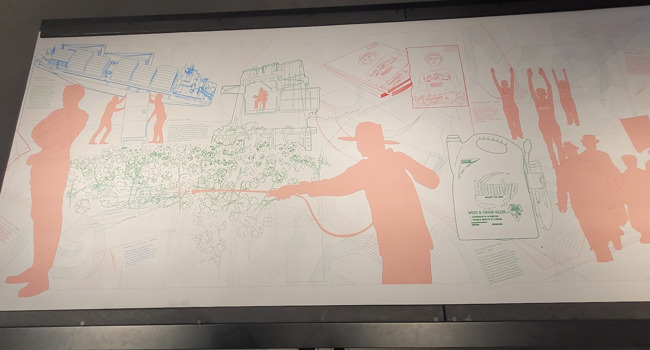
The clues are actually close ups of this exhibit, but we notice there’s something different. Each given clue is missing what resembles a letter when compared to the actual exhibit.
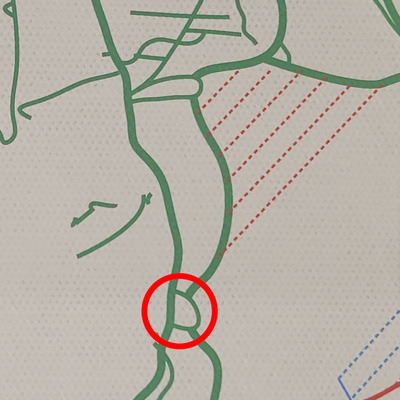 | 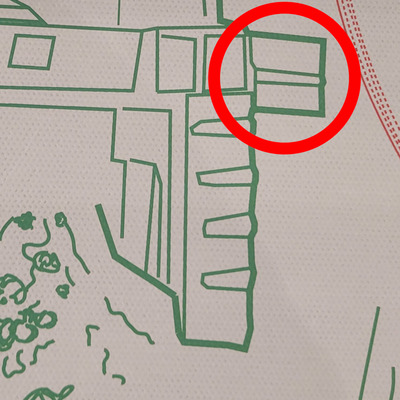 | 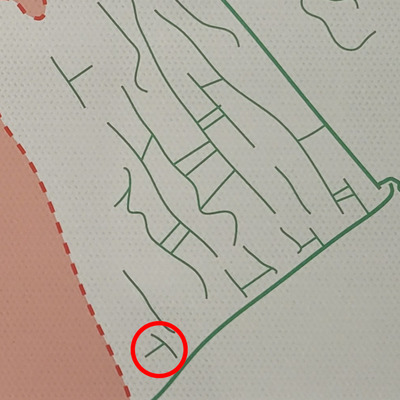 |
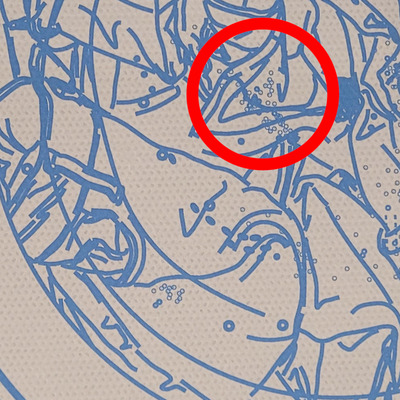 | 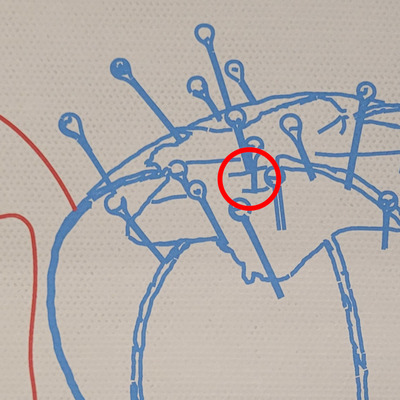 | 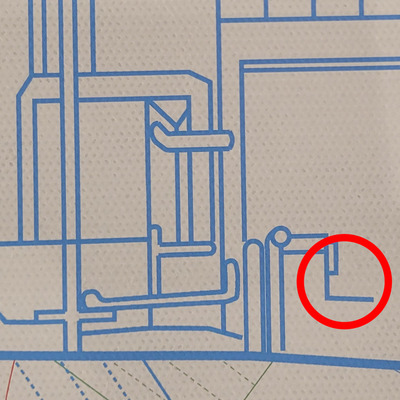 |
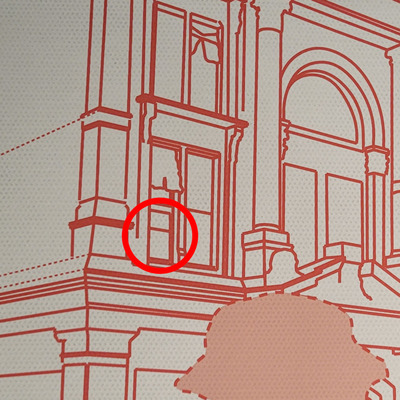 | 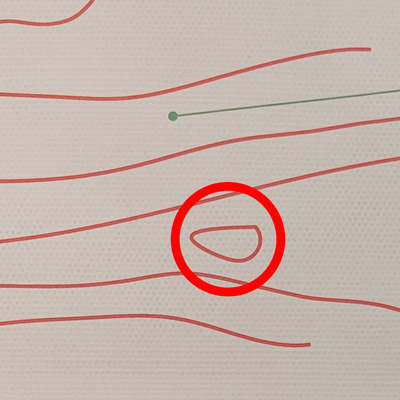 |
This gives the first word in our clue phrase, DETAILED.
Biotechnology from the Blue Flower (Gene Cultures)
One of the exhibits has a triangulated leaf that looks like the given image.
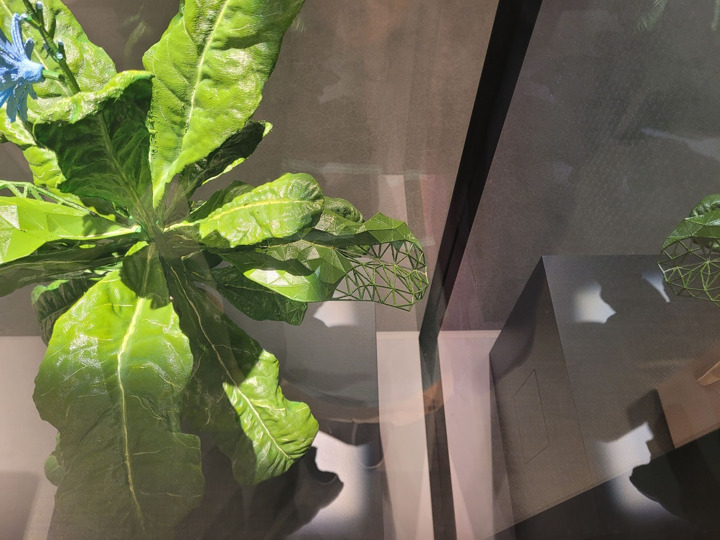 '
'
This allows us to determine how to triangulate the given shape in the mini. Then, by following the given rules, we can solve the logic puzzle by shading these triangles.
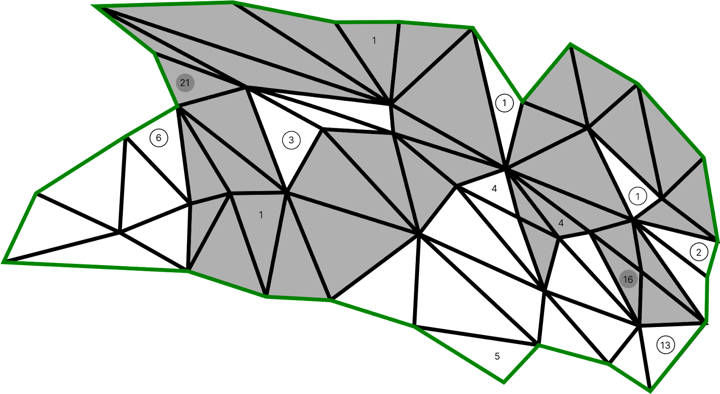
This extracts to OR by reading the shaded regions.
Virophilia (Gene Cultures)
The exhibit Virophilia displays a “cookbook” of dishes that use viruses as an ingredient, with seven of these dishes pictured. Of these dishes, six of them have the name of the dish in a corner of the image.
In the puzzle, we have The Last Supper with certain foods added to it. These additions represent the dishes from Virophilia, albeit somewhat abstractly. We also notice that the colors on the tablecloth correspond to the backgrounds of the dish images. Reading the groups of colors from left to right gives us the ordering of dishes, shown below (click image to enlarge).
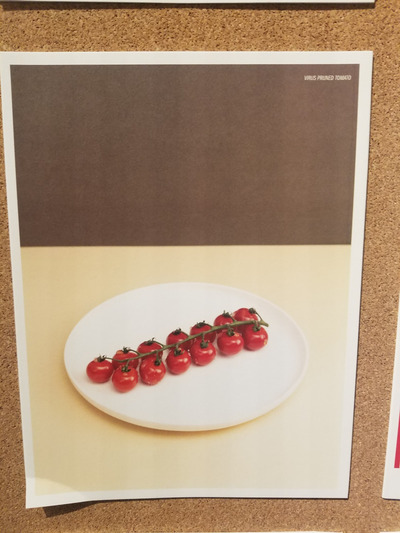 | 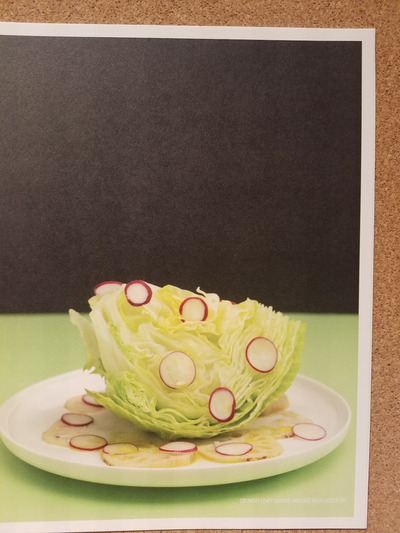 | 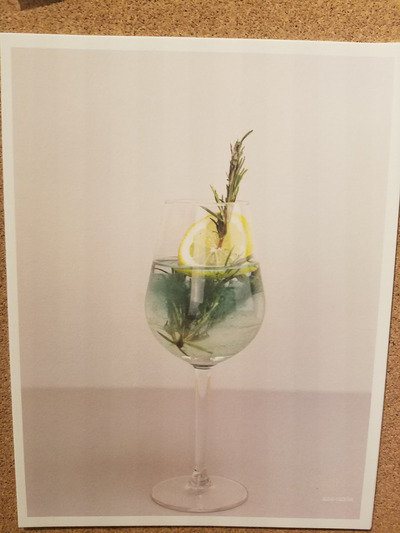 | 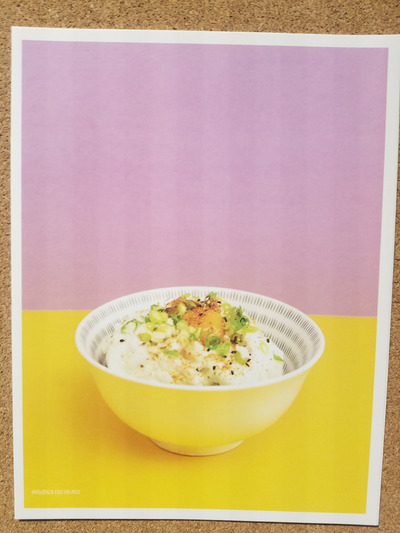 | 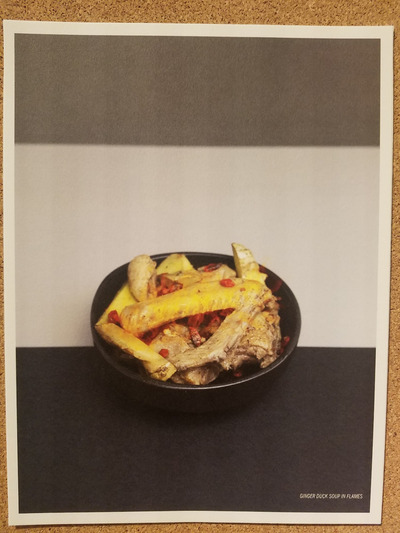 | 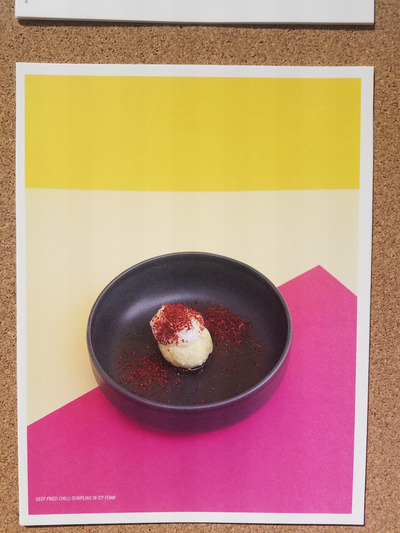 |
| Virus pruned tomato | Crunchy leaf greens dressed with caster oil | Algae cocktail | Influenza egg on rice | Ginger duck soup in flames | Deep fried chili dumpling in icy foam |
In The Last Supper, there are 5 vines of tomatoes, 1 head of lettuce, 4 drink glasses, 4 bowls of rice, and 1 dumpling, 5 piles of wings. Using these counts to index into the corresponding dish name, we get the following.
| Dish name | Count | Letter |
|---|---|---|
| VIRUS PRUNED TOMATO | 5 | S |
| CRUNCHY LEAF GREENS DRESSED WITH CASTER OIL | 1 | C |
| ALGAE COCKTAIL | 4 | A |
| INFLUENZA EGG ON RICE | 4 | L |
| GINGER DUCK SOUP IN FLAMES | 5 | E |
| DEEP FRIED CHILI DUMPLING IN ICY FOAM | 1 | D |
This results in the third word in our clue phrase, SCALED.
Starshade (Essential MIT)
Near the front of the second floor, there is a projection animation of a starshade unfurling on the floor and a video animation on the description panel.
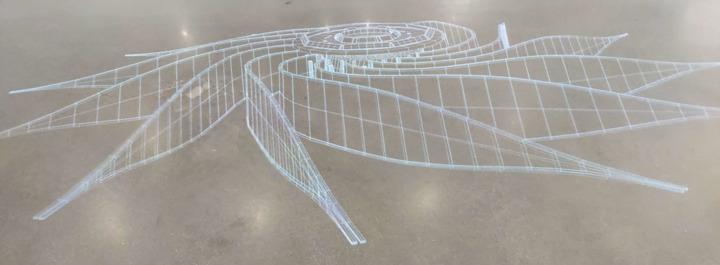
We are given an animation with 24 petals with characters on the front and back. This is the same size as the animation on the ground (though the video and real one have 28).
As the starshade unfurls, the sides of the petals that appear on one side alternate between front and back. If we map out where the characters end up, we end up with STARSHADE 1 DASH METER BLANK on one side (highlighted red below) and TITLES ON DESCRIPTION PANEL (highlighted blue below, read backwards) on the other reading clockwise.
| Front | S | C | A | E | S | N | A | S | E | L | D | I | S | L | M | N | T | P | R | O | L | T | N | I |
|---|---|---|---|---|---|---|---|---|---|---|---|---|---|---|---|---|---|---|---|---|---|---|---|---|
| Back | R | T | S | R | D | H | O | D | E | 1 | T | A | T | H | E | E | A | E | N | B | I | A | P | K |
On the description panel, one of the titles is “Starshade One-meter Model.” The answer for this mini puzzle is MODEL.
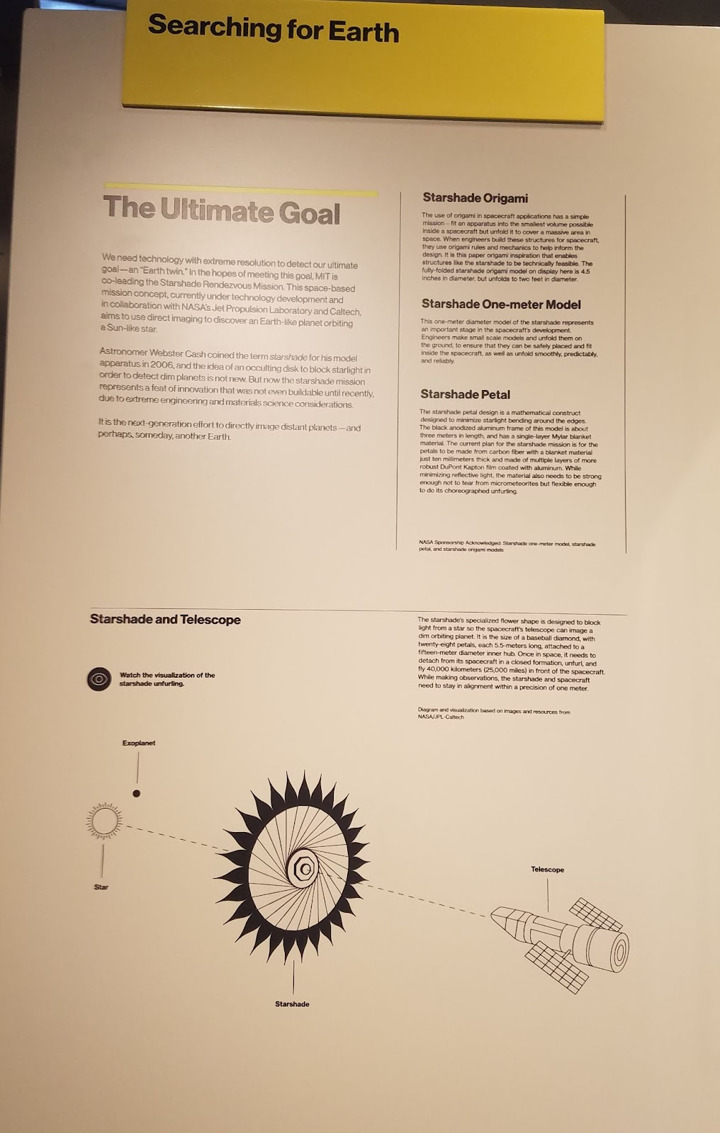
Virophilia (Gene Cultures)
We are given a list of messages from a friend, printed on a scroll. In the flavor, the friend thinks they are “coming down with something”, pointing us to the Virophilia exhibit, and the presentation of the puzzle on a scroll points us toward the long sheets of parchment on which virus names are printed.
The messages are presented as a mixed up guide through museum exhibits, where each exhibit is actually the name of a virus located somewhere on the parchment. Each message mentions 3 exhibits: one we should see, but also one we need to see at some point beforehand, and another we need to see at some point afterward. Taking all the messages together, we can work out a total ordering for all 21 exhibits mentioned.
The flavor also provides clues to divide this sequence into five “galleries” (groups). We are given that the first and last galleries have an even number of exhibits, and also that each gallery contains 3-5 exhibits. Thus, the first and last galleries must have 4 exhibits each. We also know that the gallery with the fewest exhibits contains the eggplant mosaic. With 13 exhibits remaining, they can only be divided up into 3 galleries two different ways: 3-5-5 or 4-4-5. Of these, only 3-5-5 results in the existence of a gallery with the “fewest” exhibits. Since it must contain the eggplant mosaic, we can conclude the remaining 3 galleries must have 5, then 3, then 5 exhibits in them.
| Gallery 1 | Butterfly flower mosaic virus |
|---|---|
| Bean calico mosaic virus | |
| Cafeteriavirus-dependent mavirus | |
| Beluga whale coronavirus SW1 | |
| Gallery 2 | Clitoria yellow mottle virus |
| Charybdivirus charybdis | |
| Clover yellow vein virus | |
| Cherry leaf roll virus | |
| Coffee ringspot dichorhavirus | |
| Gallery 3 | Cucumber Bulgarian latent virus |
| Dill cryptic virus 2 | |
| Eggplant mosaic virus | |
| Gallery 4 | Hairy antennavirus |
| Gordonia virus Yikes | |
| Havel River virus | |
| Grapevine asteroid mosaic associated virus | |
| Honeysuckle ringspot virus | |
| Gallery 5 | Kabuto mountain uukuvirus |
| Koala retrovirus | |
| Leek white stripe virus | |
| Lily virus X |
Finally, we “visit” all of these viruses as we find them on the top scroll of parchment. Tracing a line from one to the next and only lifting our (virtual!) pen when we enter a new gallery, we see that our path creates five letters:

Click to magnify.
This gives us the final part of our clue phrase, SEVEN.

